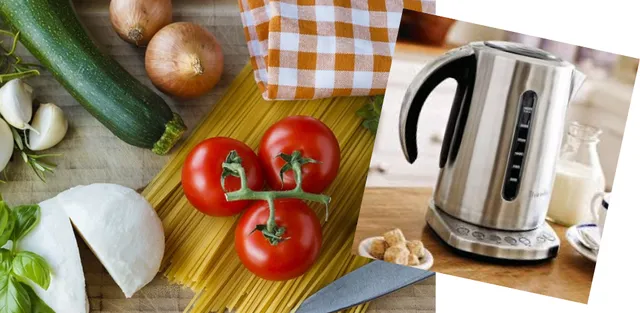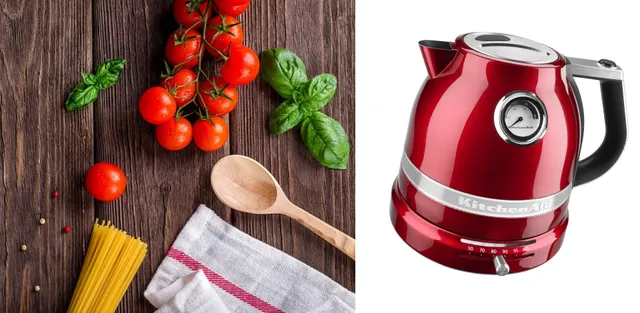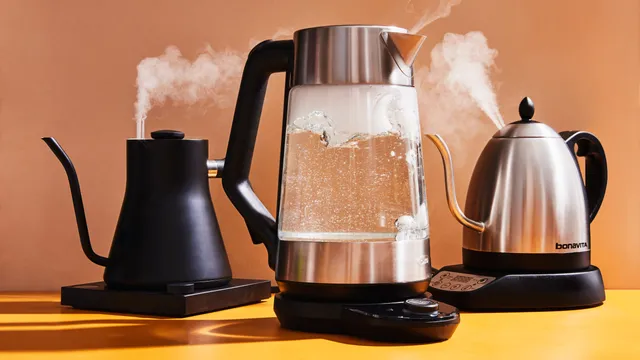Can You Boil Milk in Electric Kettles? A Comprehensive Guide
-
 Dragos
Dragos - January 8, 2024
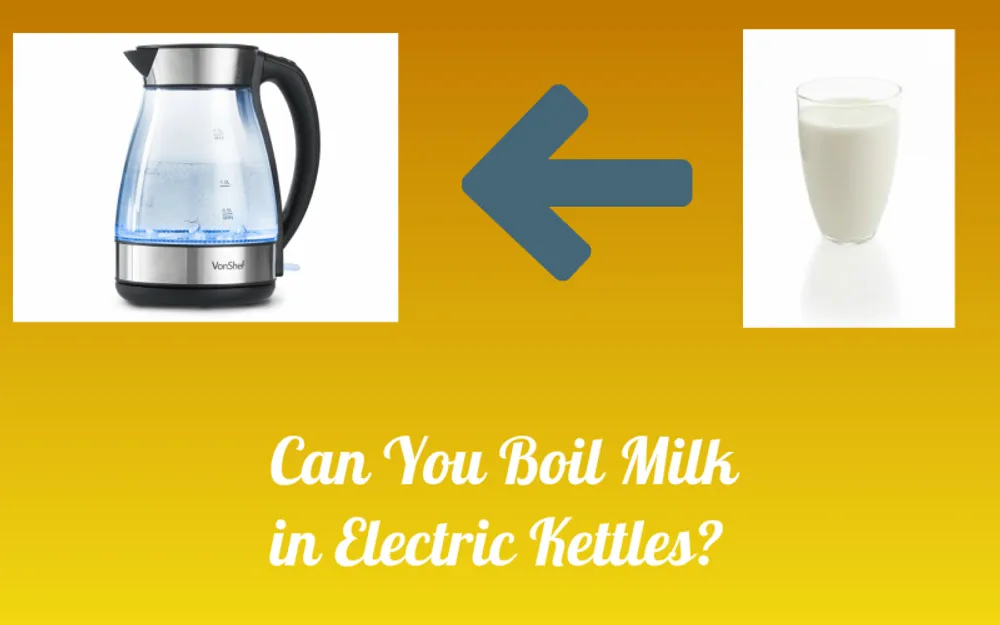
Electric kettles have become indispensable in many households, offering a quick and efficient way to heat water for various purposes. However, as people explore the versatility of these appliances, a common question arises: Can you boil milk in electric kettles? This article delves into the risks, potential methods, and alternatives for heating milk in electric kettles, providing you with a comprehensive understanding of the topic.
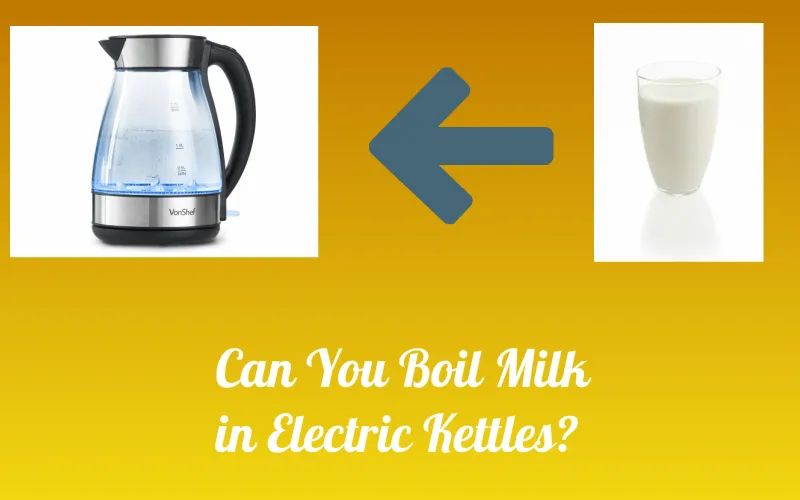
Are Electric Kettles Designed for Boiling Milk?
The short answer is no. Electric kettles are specifically designed for heating water, not milk. This design focus is due to several important factors:
-
Milk Spillover: Unlike water, milk doesn’t evaporate when boiled and can easily spill over. This is because milk forms a film on its surface as it heats, trapping steam underneath. When the steam builds up enough pressure, it can cause the milk to suddenly rise and spill out of the kettle.
-
Auto Shut-off Malfunction: Kettles rely on steam to trigger the auto shut-off mechanism. Water produces a consistent amount of steam at its boiling point, which activates this safety feature. Milk, however, doesn’t produce steam in the same way due to its different composition, potentially leading to the auto shut-off failing to activate.
-
Residue Build-up: Milk leaves sticky residues that are hard to clean and can affect kettle functionality. These residues can accumulate on the heating element and internal surfaces of the kettle, reducing its efficiency and potentially causing long-term damage.
-
Odor Issues: Burnt milk can leave a foul smell, affecting the taste of future beverages. This odor can be particularly persistent and difficult to eliminate, potentially ruining the kettle for its primary purpose of boiling water for tea or coffee.
-
Protein Denaturation: Milk contains proteins that denature and stick to surfaces when heated, unlike water. This can lead to a layer of denatured proteins coating the inside of the kettle, which is difficult to remove and can affect the kettle’s performance.
Understanding these factors is crucial in recognizing why electric kettles are not suitable for boiling milk. Their design and safety features are optimized for water, and using them for milk can lead to various issues and potential hazards.
For more on kettle functionality and how they’re designed to make our lives easier, see our article on how electric kettles made our life easier.
The Science Behind Milk Boiling
To fully understand why boiling milk in an electric kettle is problematic, it’s helpful to explore the science behind milk’s behavior when heated:
-
Composition: Milk is a complex emulsion of water, fats, proteins, and sugars, unlike water which is a simple compound. This composition affects how milk reacts to heat.
-
Protein Behavior: As milk heats, its proteins (primarily casein and whey) begin to denature. This denaturation causes the proteins to unfold and bond with each other, creating a film on the surface of the milk.
-
Fat Content: The fat in milk also plays a role. As the milk heats, fat globules rise to the surface, contributing to the film formation.
-
Maillard Reaction: When milk is heated, the proteins and sugars in it undergo the Maillard reaction, which can produce a caramelized flavor and brown color. This reaction doesn’t occur with water.
-
Boiling Point: While water has a consistent boiling point (100°C or 212°F at sea level), milk’s boiling point can vary slightly due to its composition and can be affected by factors like fat content.
-
Steam Production: Water produces a steady stream of steam as it approaches its boiling point. Milk, however, doesn’t produce steam in the same way due to the film on its surface, which can trap heat and lead to sudden boiling over.
Understanding these scientific principles helps explain why milk behaves so differently from water when heated and why electric kettles, designed with water in mind, are not suitable for boiling milk.
Learn about the different types of electric kettles and their specific uses
Risks of Boiling Milk in Standard Electric Kettles
Attempting to boil milk in a standard electric kettle can lead to several risks and issues:
| Risk | Consequence |
|---|---|
| Spillover | Potential electric hazard, mess, and waste of milk |
| Burnt Milk | Difficult cleaning, bad odor, potential smoke |
| Kettle Damage | Reduced lifespan, malfunction of heating element |
| Safety Hazard | Risk of short circuit, potential fire hazard |
| Hygiene Issues | Bacterial growth from milk residue |
| Taste Alteration | Future beverages may have a milk taste or odor |
Let’s explore these risks in more detail:
-
Spillover: This is perhaps the most immediate risk. As milk heats, it can quickly rise and spill out of the kettle. This not only creates a mess but can also lead to electrical hazards if the milk comes into contact with the kettle’s base or electrical components.
-
Burnt Milk: Milk can easily burn on the bottom of the kettle, especially if it’s left unattended. Burnt milk is notoriously difficult to clean and can leave a lasting, unpleasant odor that affects the taste of anything else heated in the kettle.
-
Kettle Damage: The proteins and fats in milk can coat the heating element and other internal components of the kettle. Over time, this can reduce the kettle’s efficiency and potentially lead to malfunction or complete failure of the appliance.
-
Safety Hazard: If milk seeps into the electrical components of the kettle, it can cause a short circuit. In extreme cases, this could potentially lead to a fire, especially if the kettle is left unattended.
-
Hygiene Issues: Milk residue left in the kettle can become a breeding ground for bacteria, especially if the kettle isn’t cleaned thoroughly immediately after use. This can pose health risks for future use of the kettle.
-
Taste Alteration: Even after cleaning, traces of milk can remain in the kettle, potentially affecting the taste of water or other beverages heated in it afterward. This can be particularly noticeable in delicate teas or coffees.
Given these risks, it’s clear that the potential consequences of boiling milk in a standard electric kettle far outweigh any perceived convenience. It’s always best to use appliances for their intended purpose to ensure safety, longevity, and optimal performance.
Discover the best smart kettles with advanced safety features
Methods for Heating Milk (If You Must)
While it’s strongly advised against using a standard electric kettle for boiling milk, if you find yourself in a situation where you absolutely must heat milk in an electric kettle, here are some methods that might minimize risks. However, please note that these methods still carry risks and should only be used as a last resort:
-
Open Lid Method:
- Remove the kettle lid completely.
- Fill the kettle only about one-third full with milk to allow for expansion.
- Monitor the milk closely throughout the heating process.
- Turn off the kettle immediately when the milk starts to rise or show signs of boiling.
- Never leave the kettle unattended during this process.
-
Indirect Heating:
- Place a small amount of water in the kettle, about 1-2 inches deep.
- Put milk in a heat-safe container that can fit inside the kettle without touching the water.
- Place the container of milk in the kettle.
- Heat the water to warm the milk indirectly.
- Use oven mitts to carefully remove the container of milk once it’s warm.
-
Gradual Heating Method:
- Fill the kettle with milk only up to one-third of its capacity.
- Turn on the kettle for short intervals (20-30 seconds) at a time.
- After each interval, open the lid and stir the milk to distribute heat evenly.
- Repeat this process until the milk reaches the desired temperature.
-
Cold Start Method:
- Start with cold milk directly from the refrigerator.
- Fill the kettle only about one-quarter full.
- Turn on the kettle and stay nearby to monitor it closely.
- Turn off the kettle as soon as you see small bubbles forming around the edges.
Remember, these methods are not foolproof and still carry risks. They should only be attempted if you have no other options for heating milk. Always prioritize safety and be prepared to clean the kettle thoroughly immediately after use.
It’s important to note that using these methods may void your kettle’s warranty and can still potentially damage the appliance. The safest approach is always to use appliances designed specifically for heating milk.
Learn about the energy efficiency of electric kettles
Alternatives to Boiling Milk in Electric Kettles
Instead of risking damage to your electric kettle or potentially creating safety hazards, consider these safer alternatives for heating milk:
-
Microwave:
- Quick and easy for small quantities of milk
- Use a microwave-safe container
- Heat in short intervals, stirring between each to ensure even heating
- Be cautious of superheating, which can cause sudden boiling when the container is moved
-
Stovetop:
- Traditional and safe method
- Use a small saucepan or milk pan
- Heat over medium-low heat, stirring frequently to prevent scorching
- Offers more control over the heating process
-
Milk Frothers:
- Designed specifically for heating and frothing milk
- Often have temperature control features
- Ideal for making cappuccinos or lattes at home
-
Specialized Milk Kettles:
- Some models are designed specifically for heating milk
- Often have features to prevent boiling over and burning
- May include temperature control and frothing capabilities
-
Double Boiler Method:
- Place milk in a heat-safe bowl over a pot of simmering water
- Provides gentle, even heating
- Reduces risk of scorching or boiling over
-
Electric Milk Warmer:
- Appliance specifically designed for warming milk
- Often includes features like automatic shut-off and temperature control
- Ideal for parents preparing baby bottles
-
Sous Vide Device:
- Can be used to heat milk to a precise temperature
- Ensures even heating without risk of scorching
- Particularly useful for making yogurt or cheese
Each of these methods offers a safer and more appropriate way to heat milk compared to using a standard electric kettle. Choose the method that best suits your needs, considering factors like the quantity of milk you need to heat, the desired temperature, and the equipment you have available.
Explore our guide on choosing the best electric kettle for your needs
Maintaining Your Electric Kettle
If you’ve used your kettle for milk, whether intentionally or accidentally, proper cleaning is crucial to maintain the appliance and ensure it continues to function properly for its intended use of boiling water. Here’s a detailed guide on how to clean your kettle after milk exposure:
-
Clean immediately after use:
- Don’t let the milk residue dry in the kettle
- Empty any remaining milk and rinse with cold water
-
Use a mixture of vinegar and water for descaling:
- Mix equal parts white vinegar and water
- Fill the kettle halfway with this solution
- Boil the mixture and let it sit for 15-20 minutes
- Empty and rinse thoroughly
-
Scrub gently:
- Use a soft sponge or cloth to clean the interior
- Pay special attention to the heating element and any crevices
- Avoid abrasive cleaners that could damage the kettle
-
Rinse thoroughly:
- Use clean water to rinse several times
- Ensure no vinegar smell remains
-
Dry completely:
- Wipe the interior and exterior with a clean, dry cloth
- Leave the lid open to air dry fully
-
Deodorize if necessary:
- If milk odor persists, boil water with a few lemon slices
- Let it sit for an hour, then rinse and dry
-
Regular maintenance:
- Even if you only use your kettle for water, descale it regularly
- This prevents mineral buildup and ensures efficient operation
Remember, prevention is better than cure. It’s always best to avoid using your electric kettle for anything other than water to maintain its longevity and performance.
For more detailed cleaning instructions, check our comprehensive guide on how to clean an electric kettle.
FAQs About Boiling Milk in Electric Kettles
-
Q: Can boiling milk damage my kettle? A: Yes, it can leave residues that are difficult to clean and potentially cause electrical issues if milk seeps into the components. The proteins in milk can also coat the heating element, reducing its efficiency over time.
-
Q: Are there kettles designed specifically for boiling milk? A: Yes, some specialized models exist, but they’re not common. These are often marketed as milk boilers or multi-purpose kettles and have features to prevent milk from boiling over or burning.
-
Q: How do I remove milk residue from my kettle? A: Use a mixture of equal parts vinegar and water, boil it in the kettle, let it sit for 15-20 minutes, then scrub gently with a soft sponge. Rinse thoroughly afterward. For stubborn residues, you may need to repeat this process.
-
Q: Is it safe to heat plant-based milk in a kettle? A: While slightly safer than dairy milk due to lower protein content, it’s still not recommended. Plant-based milks can still leave residues and potentially interfere with the kettle’s functionality.
-
Q: Can I use my kettle again for water after boiling milk in it? A: Yes, but only after thorough cleaning and ensuring no milk residue remains. There’s a risk that any leftover milk could affect the taste of water or other beverages.
-
Q: Why does milk boil over so easily compared to water? A: Milk forms a film on its surface as it heats, trapping steam underneath. When this steam builds up enough pressure, it causes the milk to suddenly rise and boil over.
-
Q: Are there any health risks associated with boiling milk in an electric kettle? A: The main health risk comes from potential bacterial growth if milk residue is left in the kettle. Always clean thoroughly if milk has been heated in the kettle.
-
Q: How can I quickly heat milk without a microwave or stove? A: Consider investing in a milk frother or a specialized milk warmer. These appliances are designed specifically for heating milk safely and efficiently.
Learn about the different types of electric kettles and their specific uses
Conclusion
While electric kettles are excellent for boiling water, they’re not suitable for heating milk. The risks of spillover, kettle damage, and safety hazards significantly outweigh any perceived convenience. The unique properties of milk, including its protein content and tendency to form a film when heated, make it incompatible with the design and safety features of standard electric kettles.
If you frequently need to heat milk, consider investing in a dedicated milk frother, a specialized milk kettle, or using traditional methods like stovetop heating. These alternatives provide safer and more appropriate ways to heat milk without risking damage to your appliances or creating potential safety hazards.
Remember, the key to longevity for your electric kettle is proper use and maintenance. Stick to water for your standard electric kettle to ensure safety, optimal performance, and the best taste for your water-based beverages. Regular cleaning and descaling will help maintain your kettle’s efficiency and extend its lifespan.
By understanding the limitations of electric kettles and respecting their intended use, you can enjoy the convenience and efficiency they offer for years to come. Always prioritize safety in your kitchen and use appliances as they were designed to be used.
For more insights on electric kettles and their proper use, explore our other articles:
- What to Check When Buying an Electric Kettle
- Are Electric Kettles Energy Efficient?
- Best Electric Kettle with Tea Infuser
Stay safe and enjoy your electric kettle for its intended purpose – quickly boiling water for your favorite beverages!




